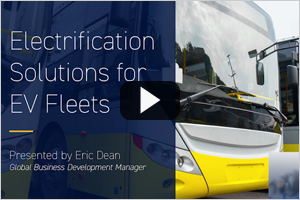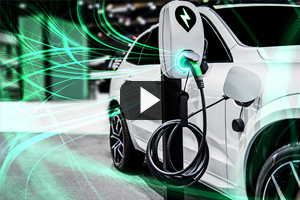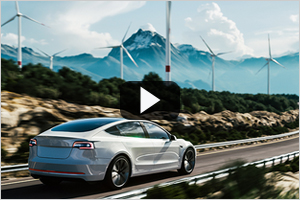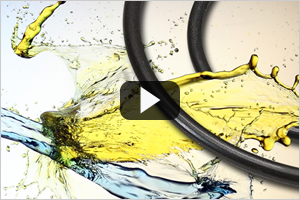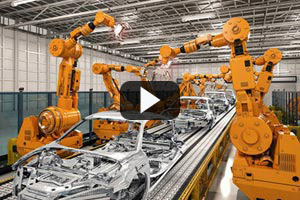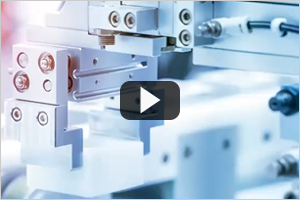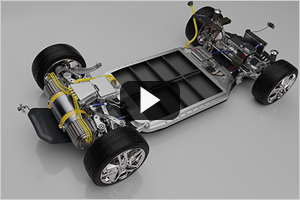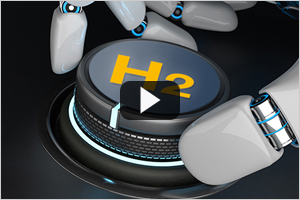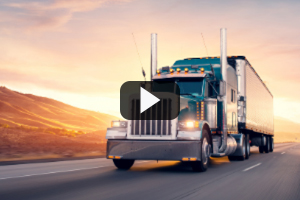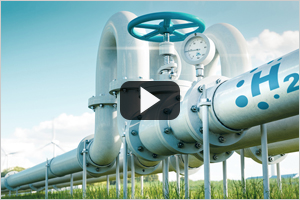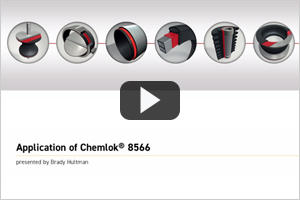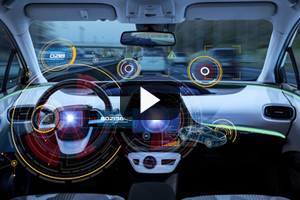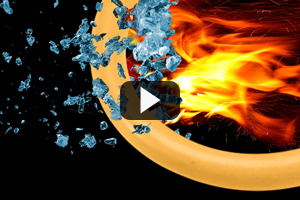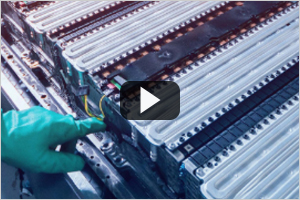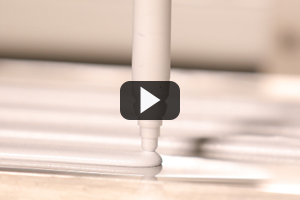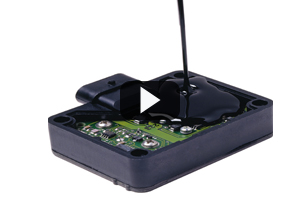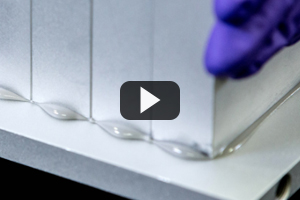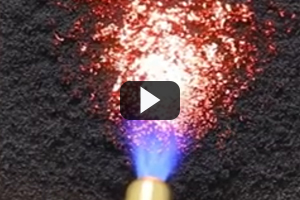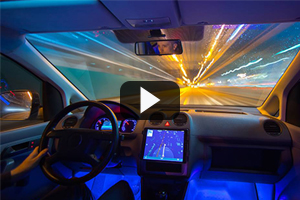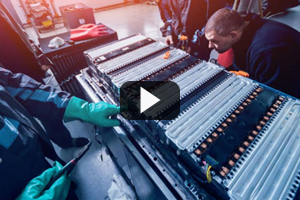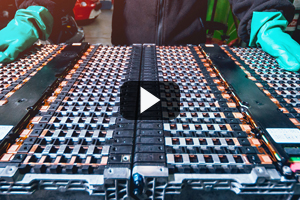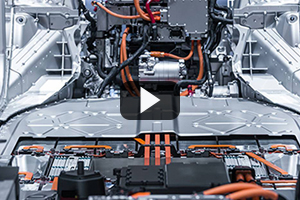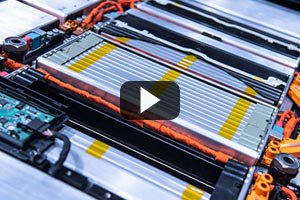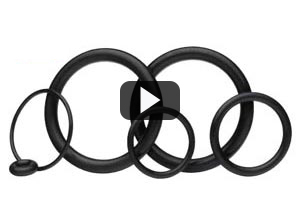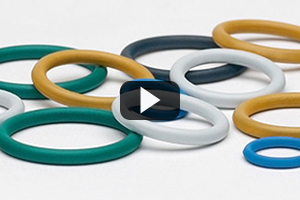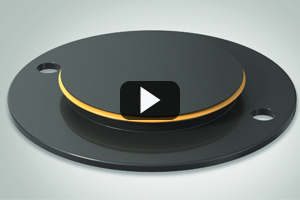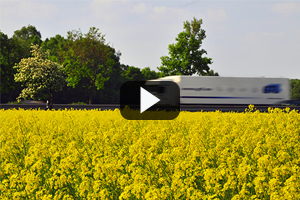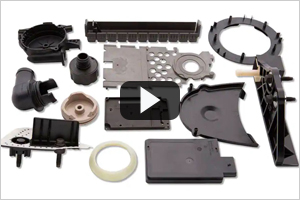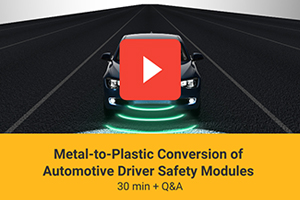

Automotive, Off-Highway & Transportation | Webinars
Featured Webinars
Electrifying fleets is an important part of achieving global CO2 reductions. During this informational webinar on EV Fleet Solutions, you will learn:
- The latest trends that are driving growth in the EV Fleet Industry
- How thermal interface materials (TIMs) can improve heat transfer, life and performance in EV fleet batteries and power electronics
- How the application of dielectric coatings can protect components from electrical arcing, prevent fires, compress designs and increase reliability
- How to use encapsulating foams to increase durability and reach new safety standards
Electric vehicle battery covers pose unique sealing challenges in the automotive industry. The significant size of the sealing perimeter, the materials and size of the seal mating hardware, and the aggressive performance requirements all play a crucial role in the design and installation of this critical seal. Join our experts to discuss the benefits and innovative sealing options Parker offers to ensure maximum seal life and performance in addition to installation efficiency and cost reduction.
In our webinar, we present solutions for sealing battery and thermal management systems as well as special sealing solutions which can compensate large tolerances. In addition, we show how the functional scope of seals can be significantly expanded with smart solutions.
Our webinar provides you with an overview of the chemical basics of polarity and the solubility of substances. In addition, we present various application examples and an overview of our portfolio of sealing compounds with selection recommendations for various operating temperatures. The materials presented are ideally suited for demanding sealing solutions in fuel cells.
Assembling internal combustion engine cars and electric vehicles using structural adhesives instead of mechanical fasteners not only results in process efficiencies but can help increase performance. The benefits of using structural adhesives aren’t confined to the manufacturing phase. Lighter-weight cars can travel farther per gallon or charge than heavy vehicles.
In this webinar, learn how Parker Prädifa's modular seal-wiper kit enables the same pneumatic cylinders to be used for a wide variety of applications.
With the significant growth and development of battery pack technologies, manufacturers of EVs are placing an increased emphasis on pack design optimization seeking lighter weight and more compact solutions to gain additional energy density and reduce cost. In our webinar, we will discuss our evaluation of the dielectric protection, process application advantages and disadvantages, edge coverage, adhesion properties, and environmental resistance of each of these categories of materials. Test results presented will include hi-pot break down voltage before & after environmental exposures (i.e. 85/85 and thermal shock), cross-hatch & lap-shear adhesion, thickness measurements on edges & corner radius, and thermal conductivity.
Learn about the requirements of hydrogen applications for the sealing systems and the choice of materials and about sealing solutions for hydrogen applications with cryogenic conditions, high pressures and for use in fuel cells and electrolyzers.
Structural adhesives are a great way to replace traditional fastening methods for greater cost and time savings. Hear how the trailer industry is evolving by utilizing adhesives and sealers during manufacturing. Structural adhesives offer tools for the manufacturer to replace and/or reduce welds, rivets and mechanical fasteners.
In our webinar that is mainly focused on gas leakage, you are going to learn in detail about key influencing factors and what types of seals, sealing systems, materials, and design recommendations Parker Prädifa offers to prevent leakage. These solutions will be illustrated by a variety of application examples across various industries.
Our automotive customers continue to face increased restrictions around using high volatile organic compound (VOC) adhesives in their applications. We heard the industry need and have developed a water-based, one-coat adhesive that has nearly zero VOCs and a longer shelf life – with the same level of performance as our solvent-based adhesives. Join Paul Wheeler In Part 1, where you’ll learn how Chemlok 8566 can be used on traditional automotive parts like bushings and suspension systems, rubber track crawlers and mining parts.
Our automotive customers continue to face increased restrictions around using high volatile organic compound (VOC) adhesives in their applications. We heard the industry need and have developed a water-based, one-coat adhesive that has nearly zero VOCs and a longer shelf life – with the same level of performance as our solvent-based adhesives. Join Brady Hultman in Part 2, where you’ll get step-by-step instructions on how to properly prepare your materials and how to apply the one-coat adhesive.
In traditional fastening methods, mounting lugs, screws, and rivets pierce through the aluminum battery box, which can cause a potential leak point and risks potential for outside moisture to seep into the battery pack. This presentation will dive into four top trends we’re seeing in the market for 2021 when it comes to thermal management solutions used in electric vehicle applications. Insights, data and real-world testing.
Automotive electronics require more power density and longer lifespans than in years past. Especially in electric vehicles, the increase of electronic components requires new design considerations, challenges and needs. As a total solutions provider, Parker LORD has a wide portfolio of thermal management materials, structural adhesives and coatings for automotive manufacturers and tier suppliers.
This webinar, with typical application examples from diverse industrial sectors, will provide you with a comprehensive overview of sealing solutions for extreme application temperatures, including their suitability for static or dynamic sealing functions.
Sipiol UV is a coating that cures with UV light in seconds and was developed for electric vehicle battery applications. This coating is electrically insulative and can eliminate the need for PET tapes. Attend this session for an overview of Sipiol UV product properties, applications, and performance data.
Join our experts for an introduction in thermal management. We'll discuss the purpose of thermal management, why it is important, what components require it and when to consider it for your application.
Join our experts as we understand technical terms. We'll discuss an overview of technical terms used to describe thermal management products and talk through common electrical properties of cured and uncured materials.
Join our experts as we discuss silicone properties. We'll cover basic knowledge, how silicones interact, the difference between potting materials and gap fillers and what potential issues come about with material dispensing.
Join our experts as we discuss epoxy properties. Learn about epoxy properties and materials, when to choose an epoxy over different chemistries and the types offered for thermal management.
Join our experts as we discuss urethane and acrylic properties. We'll evaluate both chemistries, highlight coatings that can be paired to achieve dielectric protection and discuss Parker LORD's portfolio.
When designing battery packs for electric vehicles, fire safety in the event of battery cell failures is a difficult challenge to solve. Join Parker LORD’s webinar on fire-resistant coatings to learn how these products enable the use of lighter weight substrates while maintaining fire-safety standards.
To enhance passenger comfort, OEMs want to eliminate engine noises, automotive component vibrations, or other road noises. Parker-LORD Sipiol coatings and Flocksil/Flocklok flock adhesives not only provide excellent noise reduction but improve the overall sealing durability, providing the end customer with a quiet, dry, and dependable ride.
Electric vehicle batteries, much like traditional combustion engine batteries need to be repaired or replaced as they age. As EVs are designed and rolled off the production line using more innovative materials for assembly, it becomes more complex to remove or repair battery pack components. This webinar will address serviceability of electric vehicle battery packs and different methods for assembly.
Traditional joining techniques in the automotive industry includes welding and mechanical fasteners. However, many challenges arise when using these methods. By using structural adhesives, the need for mechanical fasteners as well as post-weld rework is eliminated. Adhesives also eliminate heat-affected zones and can double as a sealant. In traditional fastening methods, mounting lugs, screws, and rivets pierce through the aluminum battery box, which can cause a potential leak point and risks potential for outside moisture to seep into the battery pack.
The fast-growing electric vehicle market demands robust and efficient thermal management solutions for battery packs, such as gap fillers and thermal pads. Gap fillers outperform thermal pads to achieve lower thermal impedance, as the gap fillers conform to surface roughness before curing. This allows gap fillers to adhere well to surfaces and provide mechanical support during normal operation. However, this also poses a challenge during repair, removal and re-manufacturing. Currently, there is no set standard for measuring vertical pull-off, and hence, there is a lack of knowledge on what level of pull-off force is needed to service these battery packs.
ParCoat® coatings from Parker Prädifa were specifically developed for elastomer products. They prevent mistakes during seal installation, thus ensuring reliable and long-lasting sealing performance. Our webinar will provide you with an overview of the wide variety of ParCoat® coatings, their properties and effects, complemented by examples from the field.
Batteries for fully electric and hybrid electric vehicles require a variety of sealing products. Watch this webinar to learn how Parker increases battery life and improves system performance with our newest technologies for battery pack sealing.
Elastomeric seals provide the necessary barrier between your process and the environment. Leakage can occur when a seal is compromised, leading to unscheduled maintenance and costly downtime. At the worst, leakage can harm personnel or the environment. Identifying and preventing seal failure is critical to minimizing downtime and keeping the environment, health, and safety a top priority.
Press-In-Place (PIP) Seals ease component assembly, serviceability, and transit issues. Seal retention is the greatest benefit of using PIP seals, achieved by sidewall interference with no adhesives required. Discover various custom profiles options and which applications they are best suited for.
It’s tempting to think of vibration isolation as a simple matter of putting a vibration mount between an object and whatever it’s resting on. Anything must be better than no mount at all, right? Actually, it’s not always right. In some cases you can create problems by adding a vibration mount to a system. Learn more about how vibration actually occurs and the basic compromises in implementing vibration isolation.
This webinar provides insights into the current state of sealing elastomer compatibility tests with alternative OME diesel fuel and synthetic diesel (GTL/HVO) and show the range of usable materials as well as their limitations. General topics pertaining to the resistance of elastomers against liquid fossil fuels and against gases such as CNG, LPG and hydrogen will be covered as well.
Metal-to-plastic conversion for automotive light weighting is quickly becoming an important characteristic as vehicles, especially EVs, try to improve emissions and range performance. Discover the benefits of metal-to-plastic replacement technology for automotive applications in this recent technical webinar.
Learn more about the benefits of metal-to-plastic conversion combined with integrated assembly manufacturing. Especially useful for automotive electronics housings such as those designed for advanced driver assistance systems (ADAS) like adaptive cruise control, lane departure warning, and blind spot monitoring.
©Parker Hannifin Corporation | Privacy Policy
